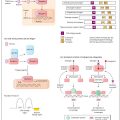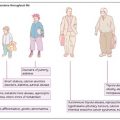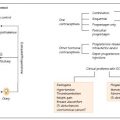
Mrs BK, a 55-year-old lady of Bangladeshi origin, presented to her GP complaining of various non-specific symptoms including generalized aches and pains and muscle weakness when walking, particularly going upstairs. Investigations showed her to have a serum calcium level of 2.02mmol/L in association with a raised alkaline phosphatase of 358 U/L and an elevated PTH concentration. Serum vitamin D concentrations were measured and found to be below the seasonal normal range. Her symptoms resolved with calcium and vitamin D supplementation.
Vitamin D deficiency is common, particularly in patients of Asian background and the elderly living alone on poor diets. In northern European populations there is a marked seasonal variation in normal serum concentrations related to varying daylight lengths. Low vitamin D levels cause hypocalcaemia, compensated for by the development of secondary hyperparathyroidism which maintains the serum calcium at low normal or mildly suppressed levels. Untreated, vitamin D deficiency can lead to the development of rickets in children or osteomalacia in adults (Fig. 51a), both associated with characteristic bone abnormalities. Recently an increase in vitamin D deficiency has been noted in children from more affluent European backgrounds with limited sun exposure due to overzealous sun protection.
Vitamins are not generally considered to be hormones, but organic dietary factors essential for healthy life. The term ‘vitamin’ is perhaps a misnomer therefore for the substances called vitamin D. The term ‘vitamin D’ refers to two steroidlike chemicals, namely ergocalciferol and cholecalciferol. Osteomalacia is the softening of bones in adults who suffer from a deficiency of vitamin D in the diet, or of sunlight, or both.
The active form of vitamin D is 1-alpha, 25-dihydroxyvitamin D3 (1,25-(OH)2-D3
Stay updated, free articles. Join our Telegram channel

Full access? Get Clinical Tree







